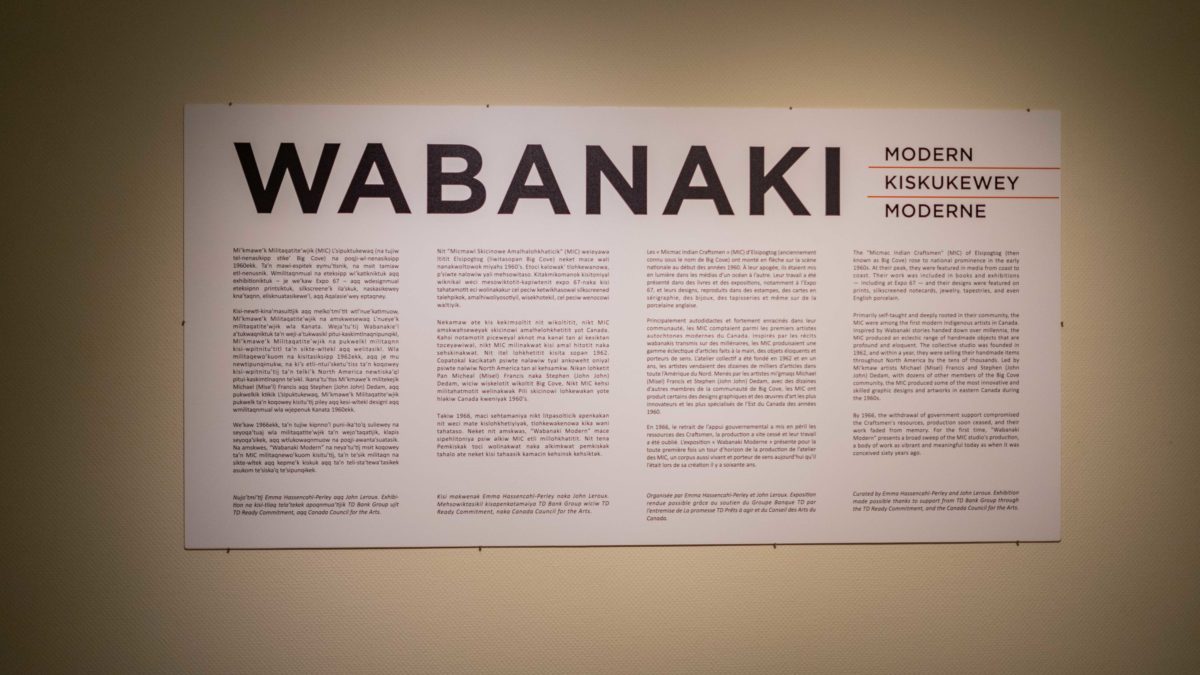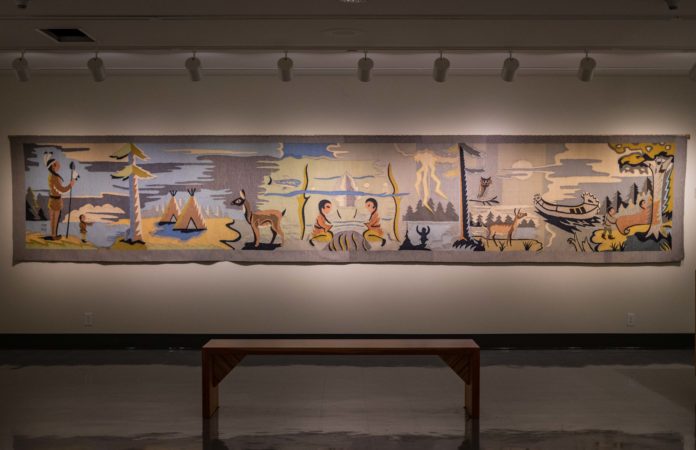The Beaverbrook Art Gallery is showcasing an exhibit dedicated to the “Micmac Indian Craftsmen” (MIC) from the 1960s, called “Wabanaki Modern – the Artistic Legacy of the 1960s “Micmac Indian Craftsmen.”
This exhibit, curated by John Leroux and Emma Hassencahl-Perley, has been at the gallery since Aug. 9 and will be available to visit until Feb. 26.

“The ‘Micmac Indian Craftsmen’ were profound storytellers, using modern visual interpretations of Mi’kmaq legends in their artwork,” wrote Leroux in an email.
“The tragedy is that the MIC has essentially been forgotten, but it is a game-changer insofar as the understanding of Indigenous art and modern fine craft and design in postwar New Brunswick and Canada. It is an important story that deserves to be shared.”
Having risen to their peak in the ‘60s, the “Micmac Indian Craftsmen” of Elsipogtog First Nation, known at the time as Big Cove, were featured in media across Canada.
These artists were primarily self-taught and had deep roots in their community, with their work being inspired by Wabanaki stories handed down over millennia. Their collective studio was founded in 1962, led by Mi’kmaw artists Michael Francis and Stephen Dedam.
Within a year, they were selling their unique handmade pieces throughout North America.
In 1996, they stopped producing art as they no longer had the necessary funds.
According to Leroux, Wabanaki Modern showcases a broad sweep of the MIC’s studio’s production. He said this is a body of work as vibrant and meaningful as when it was created 60 years ago.
“One of my earliest childhood memories is holding one of their silkscreened cards and being mesmerized by what I saw. It has stuck with me for almost 50 years and I always wanted to know more about the card and its makers,” wrote Leroux.
“Once I found out the richness of the story and how the ‘Micmac Indian Craftsmen’ studio had been all but forgotten, Emma and I thought it needed to be put back in the public view.”
The MIC were some of the first modern Indigenous artists in Atlantic Canada, helping pave the way for the field today. This exhibit aims to rectify this, displaying their art centre stage for everyone to enjoy.
“New Brunswick had some incredibly talented and devoted modern Indigenous artists in the 1960s who were applauded and celebrated nationally,” Leroux wrote. “The fact that they were forgotten long ago is tragic, but it is never too late to right a wrong.”

